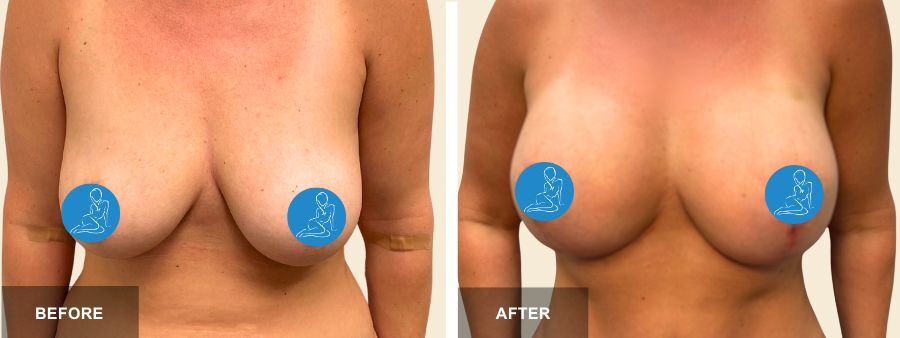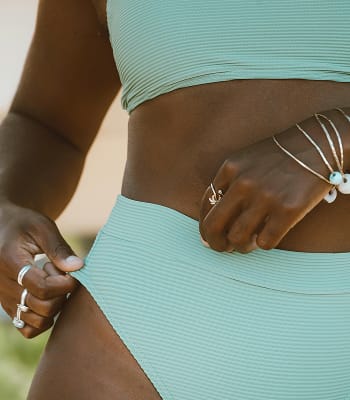When it comes to breast surgery—especially breast lifts (mastopexy) or breast reductions—many patients are understandably concerned about scarring. And while every surgical procedure leaves a mark, not all scars are created equal. One of the most common scar patterns used in breast surgery is the “lollipop scar,” also known as a vertical scar. It’s a favorite among plastic surgeons for a reason—it offers a great balance between access, control, and aesthetic outcome.
In this blog, we’ll break down exactly what a lollipop scar is, what procedures it’s used in, the pros and cons, and the best ways to care for your incision to support smooth, minimal healing.

What Is a Lollipop Scar?
A lollipop scar is a type of incision pattern used in breast surgery that circles the areola (the darker skin around the nipple) and continues vertically down to the natural fold beneath the breast (the inframammary fold). When fully healed, it forms the shape of a lollipop—hence the name.
This technique is most often used in:
- Breast Lift (Mastopexy)
- Breast Reduction
- Breast Lift with Implant (Augmentation Mastopexy)
It’s an evolution of older surgical techniques that aimed to minimize scarring while still delivering a significant lift or volume reduction.
Why Surgeons Use the Lollipop Technique
The lollipop incision offers more shaping capability than a periareolar (“donut”) lift, but with less scarring than the anchor or inverted-T technique. It’s a happy medium for patients who:
- Want to reshape sagging or drooping breasts
- Need moderate lifting or volume reduction
- Are willing to accept a scar in exchange for better contour
It provides direct access to the lower breast tissue and skin, allowing surgeons to remove excess skin, reshape the breast mound, and reposition the nipple with precision.
Pros of the Lollipop Scar Technique
- More Precise Shaping: The vertical incision allows your surgeon to better sculpt the breast and achieve a perkier, more youthful contour.
- Less Scarring Than Anchor: Compared to the anchor incision (which adds a horizontal scar along the fold of the breast), the lollipop technique eliminates that third incision, resulting in less total scar length.
- Ideal for Moderate Ptosis: If your sagging or volume loss is in the moderate range, this technique provides just enough correction without being overly invasive.
- Nipple Repositioning Possible: Since the incision surrounds the areola, your surgeon can reposition the nipple-areola complex to a more youthful height—without needing free nipple grafting.
- Compatible with Implants: A lollipop incision can be combined with breast implants (augmentation mastopexy), giving lift and volume in one procedure.
Cons of the Lollipop Scar Technique
- Visible Vertical Scar: Although it fades over time, the vertical scar down the lower pole of the breast is visible—especially in the early stages of healing.
- Not Ideal for Severe Ptosis: For patients with very large or extremely droopy breasts, the lollipop lift may not offer enough correction. In these cases, an anchor technique might be more appropriate.
- Tension on the Vertical Scar: Depending on your skin quality and healing process, some patients experience widening or thickening along the vertical incision.
- Pigment Changes Around the Areola: Some patients may notice slight pigment shifts or scar visibility around the areola, especially if prone to hyperpigmentation or keloid formation.
What to Expect During Healing
Healing after a breast lift or reduction using the lollipop technique follows a general timeline, but individual experiences may vary. Here’s what you can expect:
Week 1:
- Swelling, bruising, and tightness are common.
- You’ll wear a post-surgical bra to minimize movement and swelling.
- Incisions will be covered with steri-strips or light dressings.
Week 2–4:
- Swelling starts to decrease.
- You’ll begin gentle massage techniques (as directed).
- Scar tissue starts forming under the skin.
Week 4–8:
- You can return to light, non-strenuous activity.
- Most of the bruising will have resolved.
- Incisions begin to fade from red to pink.
Month 3–6:
- Scar maturation phase: the scar starts to flatten and lose its color.
- Results become more visible as tissue settles.
Month 6–12:
- Full healing is typically complete.
- Final breast shape and scar visibility are assessed.
Healing Tips to Minimize Lollipop Scarring
- Follow Post-Op Instructions Religiously: Your surgeon will give you precise care steps—stick to them. This includes avoiding heavy lifting, wearing your surgical bra, and managing your incision care properly.
- Avoid Smoking: Smoking reduces circulation and delays healing, increasing your risk of poor scarring.
- Use Silicone Gel or Strips: These products can significantly reduce the appearance of scars when used consistently during the scar maturation phase.
- Stay Hydrated and Eat Protein: Skin heals from the inside out. Focus on collagen-supporting nutrients like vitamin C, zinc, and protein.
- Minimize Sun Exposure: UV rays can darken scars. Wear SPF 50+ or keep your chest fully covered when outdoors.
- Consider Laser or Microneedling Later On: If your scars become raised or pigmented, non-surgical treatments like fractional laser or RF microneedling can help improve texture and tone.
Is the Lollipop Scar Worth It?
For many patients, the benefits of lifted, reshaped, more youthful-looking breasts far outweigh the trade-off of a vertical scar. Especially when cared for properly, the scar fades significantly over time—and is often hidden by bras, bikinis, and clothing.
If you’re considering a breast lift or reduction and want to maintain as natural a shape as possible, the lollipop incision may be your best bet.
While all surgical procedures carry some degree of scarring, the lollipop scar technique offers a balance of effective reshaping and moderate scar visibility. It’s ideal for those looking for a lifted, youthful contour without the need for extensive incisions. With the right care, you can achieve beautiful, long-lasting results—and scars that quietly fade into your story, not your confidence.




